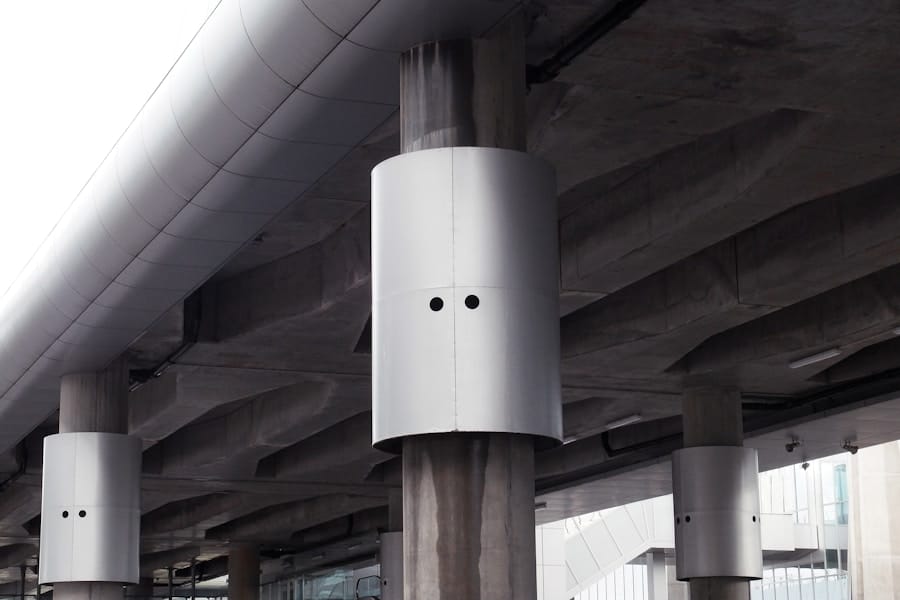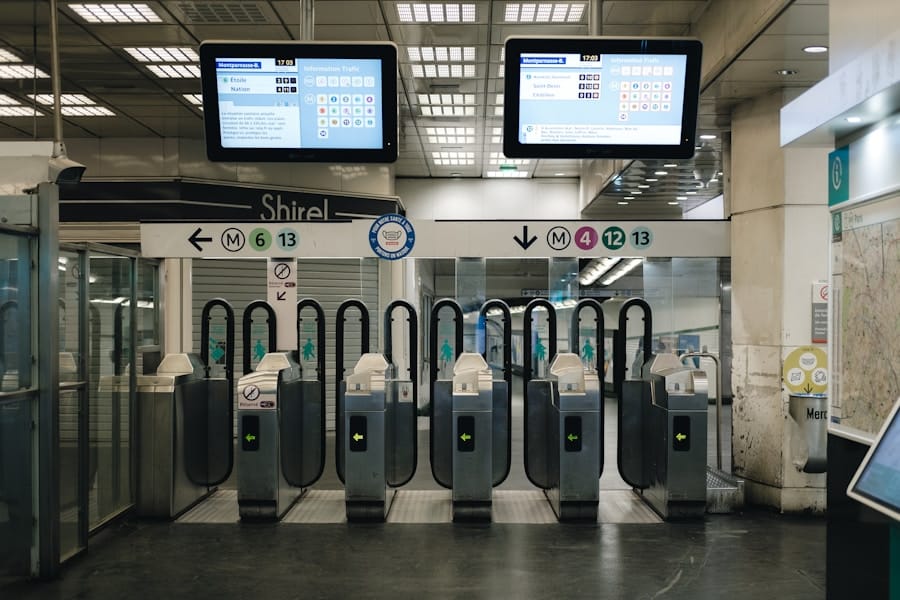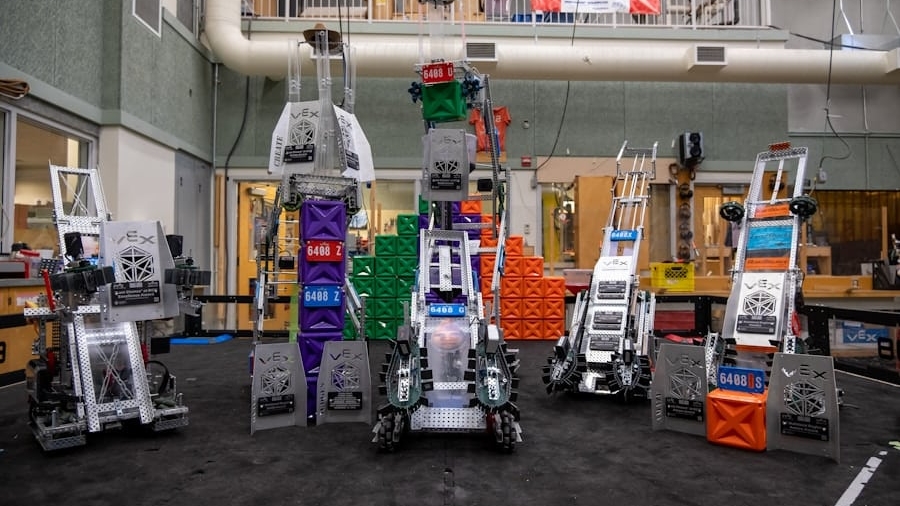The advent of robotics has revolutionized various sectors, and the cleaning industry is no exception. Robot cleaners, specifically designed for large public spaces such as airports, shopping malls, hospitals, and educational institutions, have emerged as a significant innovation. These autonomous machines are engineered to perform cleaning tasks with minimal human intervention, thereby enhancing efficiency and maintaining hygiene standards in environments that experience high foot traffic.
The integration of robot cleaners into these spaces not only addresses the challenges of maintaining cleanliness but also reflects a broader trend towards automation in everyday life. As urbanization continues to rise, the demand for effective cleaning solutions in large public spaces has become increasingly critical. Traditional cleaning methods often struggle to keep pace with the volume of dirt and debris generated in such environments.
Robot cleaners offer a promising alternative, equipped with advanced sensors and artificial intelligence that allow them to navigate complex layouts and adapt to varying conditions. This technological evolution is not merely about replacing human labor; it represents a shift towards smarter, more efficient cleaning practices that can significantly enhance the overall experience for visitors and staff alike.
Key Takeaways
- Robot cleaners are becoming increasingly popular in large public spaces due to their efficiency and ability to cover large areas.
- Current challenges and limitations of robot cleaners include their inability to handle complex tasks and the need for human intervention in certain situations.
- Advancements in technology for robot cleaners, such as AI and machine learning, are improving their capabilities and allowing them to perform more complex cleaning tasks.
- The benefits of using robot cleaners in large public spaces include increased efficiency, cost savings, and the ability to operate in a variety of environments.
- Implementation and integration of robot cleaners in large public spaces require careful planning and consideration of factors such as space layout and human-robot interaction.
Current Challenges and Limitations of Robot Cleaners
Despite their potential, robot cleaners face several challenges that limit their widespread adoption in large public spaces. One of the primary concerns is the complexity of navigating dynamic environments. Unlike controlled settings, public spaces are often filled with obstacles such as furniture, people, and varying floor surfaces.
While many robot cleaners are equipped with sophisticated navigation systems, they can still struggle with real-time decision-making in unpredictable situations. For instance, a robot may encounter a group of people or an unexpected spill that requires immediate attention, leading to delays or inefficient cleaning processes. Another significant limitation is the need for regular maintenance and oversight.
While robot cleaners can operate autonomously for extended periods, they are not entirely self-sufficient. They require periodic charging, maintenance checks, and software updates to ensure optimal performance. In large public spaces where cleaning demands fluctuate throughout the day, this can pose logistical challenges.
Facilities managers must balance the deployment of robot cleaners with human staff to ensure that all areas are adequately serviced without interruption. Additionally, the initial investment in robotic technology can be substantial, which may deter some organizations from making the transition.
Advancements in Technology for Robot Cleaners

Recent advancements in technology have significantly enhanced the capabilities of robot cleaners, making them more effective and reliable in large public spaces. One notable development is the integration of artificial intelligence (AI) and machine learning algorithms that enable these machines to learn from their environment. This allows robot cleaners to improve their navigation skills over time, adapting to changes in layout or foot traffic patterns.
For example, a robot cleaner deployed in an airport can learn the busiest times and adjust its cleaning schedule accordingly, ensuring that high-traffic areas are maintained without disrupting passenger flow.
High-definition cameras and LIDAR (Light Detection and Ranging) systems allow these machines to create detailed maps of their surroundings, identifying areas that require more intensive cleaning.
Some models are even equipped with specialized sensors that can detect spills or hazardous materials, prompting immediate action. This level of sophistication not only enhances cleaning efficiency but also contributes to overall safety in public spaces by ensuring that potential hazards are addressed promptly.
Benefits of Using Robot Cleaners in Large Public Spaces
The benefits of employing robot cleaners in large public spaces extend beyond mere efficiency; they encompass a range of operational advantages that can transform how facilities are managed. One of the most significant benefits is cost savings over time. While the initial investment may be high, robot cleaners can reduce labor costs by taking over routine cleaning tasks that would otherwise require a dedicated workforce.
This allows human staff to focus on more complex tasks that require a personal touch or specialized skills, ultimately leading to better resource allocation. Additionally, robot cleaners contribute to improved hygiene standards in public spaces. With heightened awareness of cleanliness due to global health concerns, maintaining a sanitary environment has become paramount.
Robot cleaners can operate continuously, ensuring that surfaces are regularly sanitized and reducing the risk of contamination. For instance, hospitals utilizing robot cleaners can enhance infection control measures by ensuring that high-touch areas are cleaned frequently and thoroughly. This not only protects patients but also instills confidence among visitors and staff regarding safety protocols.
Implementation and Integration of Robot Cleaners in Large Public Spaces
The successful implementation of robot cleaners in large public spaces requires careful planning and integration into existing cleaning protocols. Facilities managers must assess the specific needs of their environment and determine how robotic solutions can complement human efforts. This often involves conducting pilot programs to evaluate the effectiveness of different models in real-world scenarios.
For example, a shopping mall might deploy several robot cleaners during off-peak hours to gauge their performance before fully integrating them into the daily cleaning routine. Training staff to work alongside robot cleaners is another critical aspect of successful implementation. Human workers must understand how to interact with these machines, including troubleshooting minor issues and performing routine maintenance checks.
Moreover, fostering a collaborative environment where human workers view robots as partners rather than replacements can enhance overall morale and productivity. By emphasizing the complementary roles of human labor and robotic technology, organizations can create a more efficient cleaning operation that benefits everyone involved.
Future Trends and Predictions for Robot Cleaners

Looking ahead, several trends are likely to shape the future of robot cleaners in large public spaces. One prominent trend is the increasing use of data analytics to optimize cleaning operations. As robot cleaners collect data on their performance and environmental conditions, facilities managers can leverage this information to make informed decisions about cleaning schedules and resource allocation.
Predictive analytics could enable organizations to anticipate peak usage times and adjust their cleaning strategies accordingly, further enhancing efficiency. Another trend is the growing emphasis on sustainability within the cleaning industry. As environmental concerns become more pressing, there is a push for robot cleaners that utilize eco-friendly cleaning solutions and energy-efficient technologies.
Innovations such as water-saving mechanisms and biodegradable cleaning agents are likely to gain traction as organizations seek to minimize their ecological footprint while maintaining high standards of cleanliness. This shift towards sustainable practices will not only benefit the environment but also resonate with consumers who prioritize eco-conscious choices.
Potential Impact on the Cleaning Industry
The rise of robot cleaners is poised to have a profound impact on the cleaning industry as a whole. As more organizations adopt robotic solutions, traditional cleaning companies may need to adapt their business models to remain competitive. This could involve investing in training programs for staff to work alongside robots or incorporating advanced technologies into their service offerings.
Companies that embrace innovation will likely find new opportunities for growth while those resistant to change may struggle to keep pace with evolving market demands. Moreover, the integration of robot cleaners could lead to a shift in workforce dynamics within the cleaning industry. While some fear that automation will result in job losses, it is essential to recognize that robots are not designed to replace human workers entirely but rather to augment their capabilities.
As routine tasks become automated, there will be an increased demand for skilled workers who can manage and maintain these technologies. This evolution may necessitate a reevaluation of training programs within the industry to equip workers with the skills needed for a more technologically advanced landscape.
The Role of Robot Cleaners in the Future of Large Public Spaces
As we look toward the future, it is clear that robot cleaners will play an increasingly vital role in maintaining cleanliness and hygiene in large public spaces. Their ability to operate autonomously while adapting to dynamic environments positions them as valuable assets for facilities management teams across various sectors. While challenges remain regarding navigation complexities and maintenance needs, ongoing advancements in technology promise to address these issues effectively.
The benefits of implementing robot cleaners extend beyond operational efficiency; they encompass enhanced hygiene standards and cost savings that can significantly impact organizations’ bottom lines. As facilities managers continue to explore innovative solutions for maintaining cleanliness in high-traffic areas, robot cleaners will undoubtedly become integral components of modern cleaning strategies. The future holds exciting possibilities for this technology as it evolves alongside societal needs and expectations, ultimately shaping a cleaner, safer environment for all who utilize large public spaces.
In a recent article discussing the future of robot cleaners in large public spaces, it is important to consider the impact of technology on various industries. One related article that delves into the importance of technology in our daily lives is “How to Choose Your Child’s First Tablet.” This article explores the benefits of introducing children to technology at a young age and provides tips on selecting the right tablet for their needs. By incorporating innovative technology like robot cleaners in public spaces, we are paving the way for a more efficient and sustainable future.

